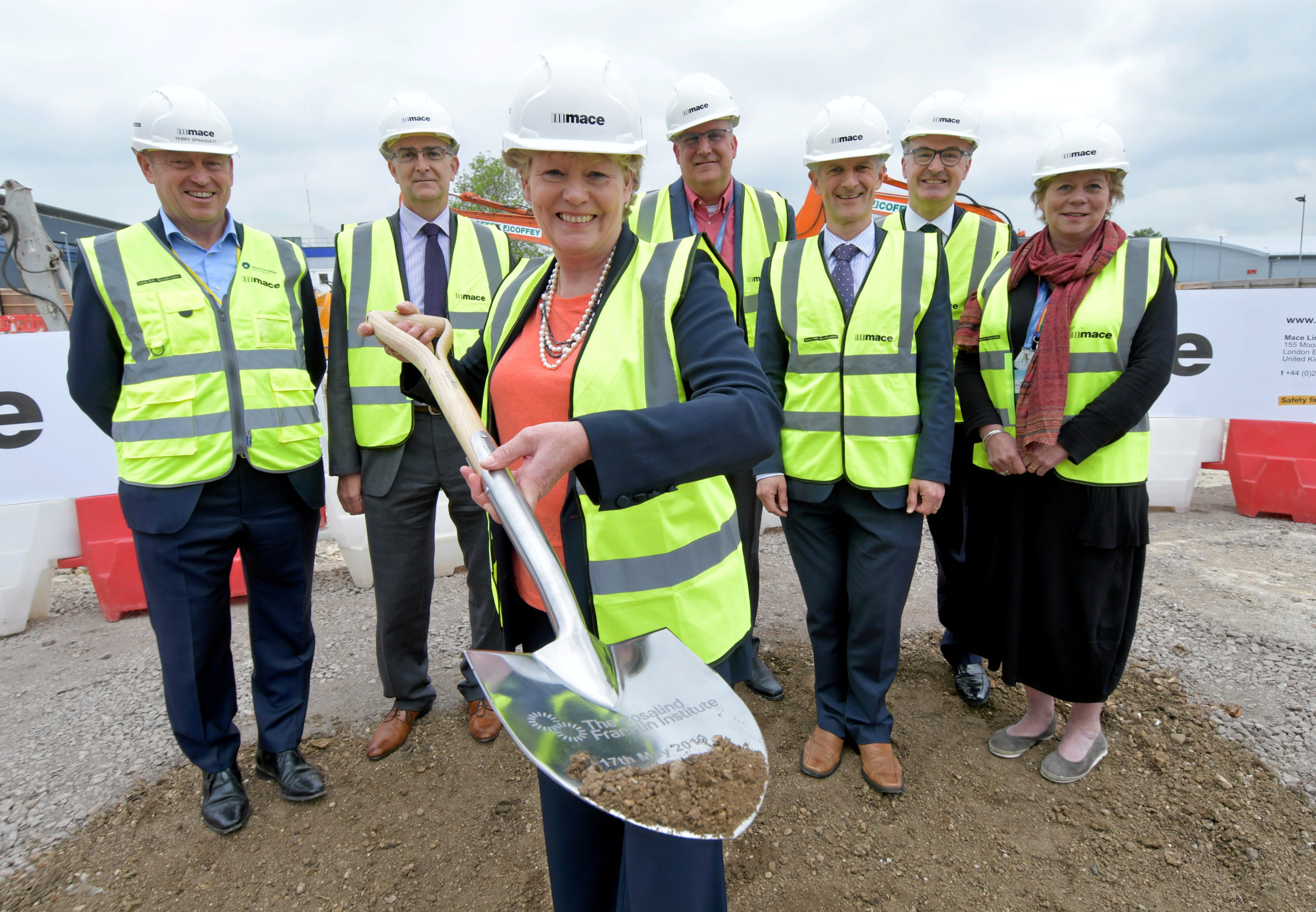
Dr Vivienne Cox breaks ground as work commences on £40 million Rosalind Franklin Institute building
Ground has been broken at Harwell Campus to commence work on the £40million, 58,000 sq ft building that will form the central hub of the new Rosalind Franklin Institute. Funded by the UK Government, the Institute carries out interdisciplinary research and develops new technologies to transform our understanding of diseases and speed up drug design.
The unique design of the building sets it apart from other research facilities. The ground floor has been designed for optimum stability to house sensitive scientific instruments. This unique requirement means the foundations of the ground floor will be separated from the rest of the building to shield it from vibration. To prevent electromagnetic interference, stainless steel reinforcement will be used in the structure, and non-ferrous materials used in the fabric, finishes, and mechanical, electrical and plumbing services. The aim is to create a close to perfect, stable environment to test the limits of specialist technologies such as electron microscopy and mass spectrometry.
The remaining three floors will house collaborative working spaces, offices and social areas as well as structural biology, chemistry and imaging laboratories, designed to be flexible to support new collaborations and avenues of technological development as the Institute grows.
The building will honour the Institute’s namesake, Rosalind Franklin, the experimental scientist famous for taking the X-ray photograph of DNA that helped establish its helical structure. The front of the building will incorporate graphics of the DNA double helix taken from the iconic X-ray photograph – known as Photo 51.
“This is an exciting day for the Institute as we begin to build the hub which is such an important part of our vision” said Chair of the Rosalind Franklin Institute, Dr Vivienne Cox. “We already have several projects underway with our partners across the UK, and the hub will provide further impetus, creating a fantastic space for research and collaboration that will enable real advances to be made.”
Harwell Campus was chosen as the ideal site for the hub as it is not only home to other complementary research capabilities, including the Diamond Light Source, but it also attracts industrial partners who take advantage of the co-location of these national research facilities to collaborate with, and further their own scientific research. The most recently announced being a £30million collaboration between the RFI and Thermo Fisher Scientific.